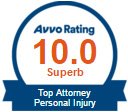Home health care is the fastest-growing sector in the health care industry; this particular area of health care is expected to grow 66 percent over the next ten years. Currently, close to seven million patients participate in in-home health care services every year. With the increasing acuteness and skilled level of care being provided at home, it is not surprising that medical mistakes, accidents, and abuse is occurring more frequently. But it is not inevitable. Your Denver nursing home abuse attorney discusses the problems and offers some solutions below.
If home healthcare is looked at from a labor viewpoint, the home is a worksite. But unlike most worksites, there is little control or oversight of the home; therefore “workplace” hazards such as unsanitary conditions, non-sterile use of medical equipment, temperature extremes of heat or cold, and neighborhood crime and violence put both the home health care worker and the patient at risk. Furthermore, because the workplace is the home, the usual workplace protections–OSHA standards, inspections, supervisory monitoring and evaluations–are not in place and cannot protect the worker or the patient.
One way to overcome these obstacles is with education and training. The Adult Abuse and Neglect Prevention (AANP) training program consist of 12 sixty-minute modules that focus on developing skills to prevent abuse and neglect as well as other communication skills relevant to all people working in long-term support service/health care settings. Of the direct access staff (DAS) tested and surveyed after taking the course: (1) scores on tests about skills and strategies to prevent abuse and neglect greatly increased; (2) 92 percent reported that the AANP training helped their ability to recognize abuse; (3) 48 percent stated that they reported suspected abuse more often; and (4) 91 percent reported that the AANP training improved their ability to prevent potentially abusive situations from developing.
As your Denver nursing home abuse attorney has pointed out in numerous blogs, adult abuse and neglect is a complex issue with no simple solutions. So-called “granny cams” are being used more often, both in the nursing home setting and in-home care settings, but even video does not catch all instances of abuse. Unannounced, frequent visits from family members, friends and/or neighbors is a good way to monitor the situation of a loved one with in-home health care. Completing background checks and contacting references of all in-home employees is another way to help prevent adult abuse and neglect. An excellent resource is the Colorado Coalition for Elder Rights and Abuse Prevention, which offers training opportunities and in-depth information on identification, prevention, and treatment of abuse, neglect and exploitation of elders. To report suspected abuse or neglect, contact Colorado Adult Protective Services.
For more information on how to identify and prevent adult abuse and/or neglect with respect to in-home health care, contact Jordan Levine at The Levine Law Firm.















